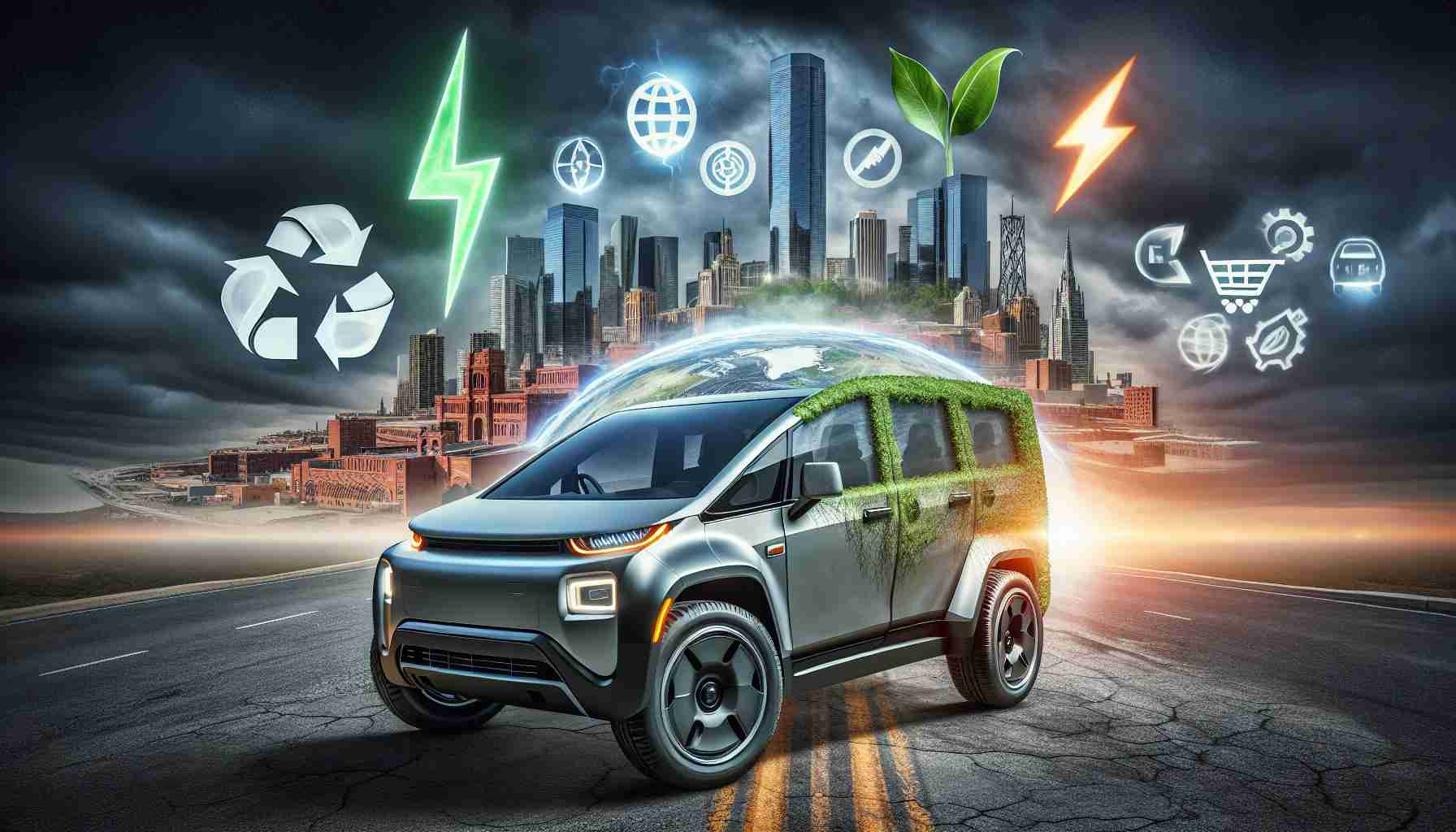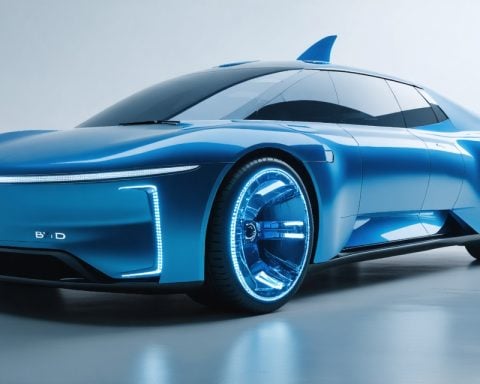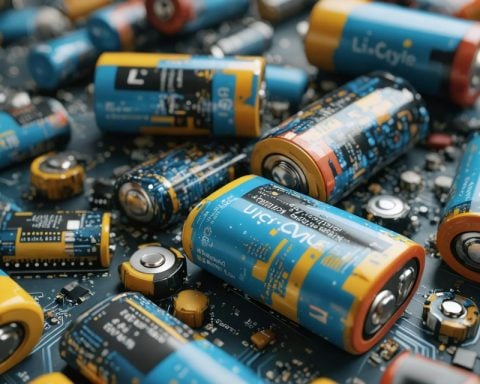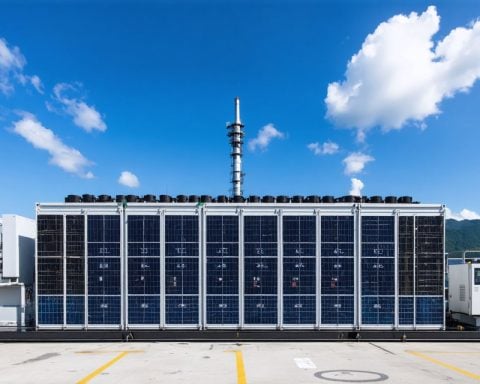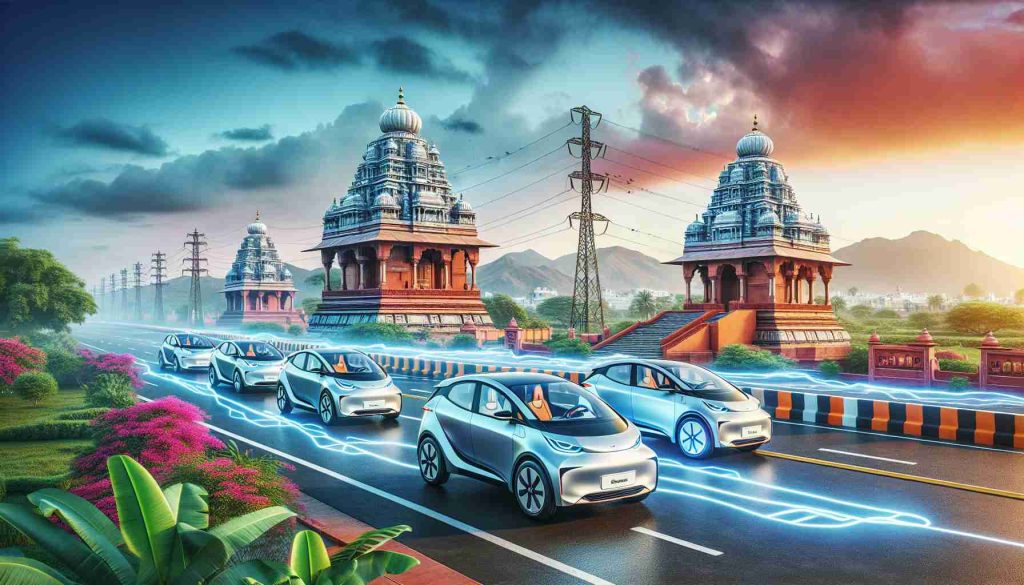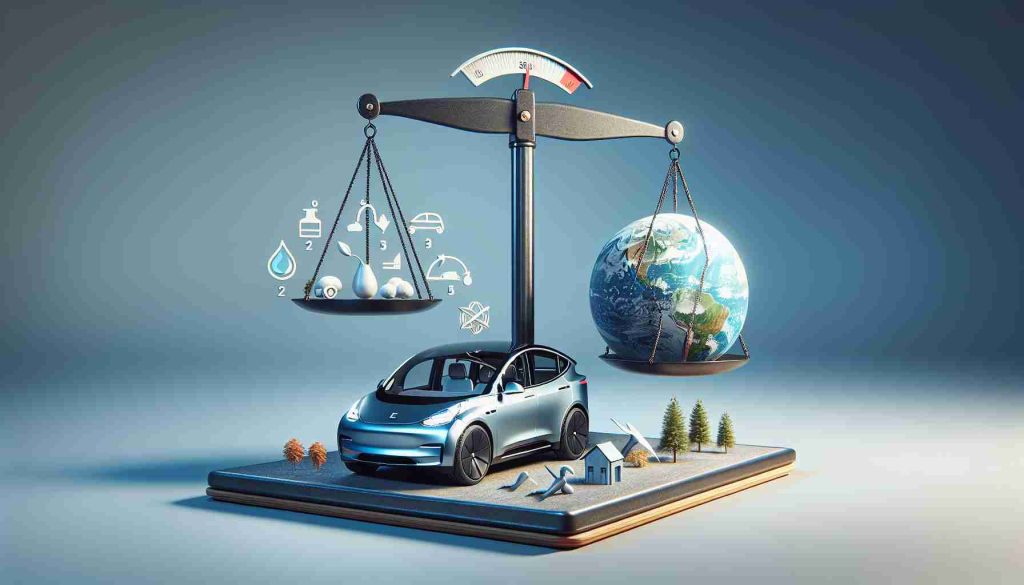- Massive electric SUVs and trucks are gaining popularity but challenge eco-friendly ideals.
- Larger batteries in these vehicles require 75% more critical minerals, increasing production carbon footprints.
- The carbon dioxide emissions from manufacturing these large batteries are 70% higher than smaller EVs.
- The U.S. EPA ratings focus on operational electricity use, overlooking mining and battery production emissions.
- Two-thirds of the nearly 600 available electric vehicle models globally are large vehicles and SUVs.
- Models like the GMC Hummer EV and Tesla Cybertruck exemplify this trend, posing environmental challenges.
- True sustainability in the EV industry requires reevaluating vehicle size preferences.
Gaze upon the bustling streets and highways, and you’ll see a new breed of titans: massive electric vehicles charging forward, defying the compact, eco-friendly promises once whispered in our ears. The allure of a roomy cabin and a commanding road presence has led consumers to favor SUVs and oversized electric trucks, but at what cost? While these giants boast zero tailpipe emissions, a stark truth lingers in the shadows: they’re not as green as they seem.
Current research reveals a disconcerting reality. As battery sizes swell to accommodate these behemoths, their production requires a staggering 75% more critical minerals. The carbon footprint from manufacturing these colossal batteries overshadows the perceived environmental benefits. With the weight of their construction pressing heavily, carbon dioxide emissions soar 70% higher compared to smaller electric counterparts.
The U.S. EPA’s consumer-facing ratings display energy consumption in an alluring light, highlighting only the electricity used when the vehicle glides silently down the road. Omitted, however, are the hefty environmental costs incurred in mining, refining, and crafting those cavernous lithium-ion batteries.
A staggering analysis by the International Energy Agency underscores this trend, noting that of the nearly 600 electric vehicle models available worldwide, a striking two-thirds belong to the large vehicle and SUV category. This evolution reflects a societal preference that undermines the eco-friendly premise of electric vehicles.
As these juggernauts hit the pavement—illustrated most prominently by the formidable GMC Hummer EV or the futuristic Tesla Cybertruck—the industry must reckon with its environmental contradictions. The promise of cleaner transit dangles before us, but only if we can resist the siren call of bigness. The takeaway? True sustainability necessitates a reconsideration of size—the very definition of “go big or go home” might need a redux.
Unmasking the Real Impact of Oversized Electric Vehicles
The Rise of the Electric Goliaths
The electric vehicle (EV) industry is undergoing a shift as consumers increasingly gravitate toward larger, more powerful vehicles like SUVs and trucks. While these electric giants offer benefits such as spacious comfort and a commanding road presence, it’s crucial to explore the multifaceted implications of their size and design on sustainability and efficiency.
How-To Steps & Life Hacks for Going Green with EVs
1. Prioritize Energy Efficiency: Opt for EVs with optimally efficient battery systems. Look for models with higher MPGe ratings which indicate better energy use.
2. Size Matters: Consider the necessity of size. Smaller EVs generally consume less energy and require fewer resources to produce, making them more eco-friendly.
3. Sustainable Driving Practices: Adopt regenerative braking techniques and maintain proper tire pressure to improve vehicle efficiency.
4. Smart Charging: Charge during off-peak hours using renewable energy sources to reduce your carbon footprint.
Real-World Use Cases
– Urban Commuting: Consider compact or mid-sized electric cars for city driving, where space is limited and efficiency is key.
– Family Vehicles: For larger vehicle needs, explore family-friendly SUVs with better efficiency ratings and reduced battery weights.
Market Forecast and Industry Trends
According to industry reports, demand for SUVs and trucks continues to grow, yet counterpoint trends show a rising interest in scalable battery technology and sustainable sourcing of materials. Companies investing in solid-state batteries could reduce reliance on critical minerals, offering more sustainable solutions in the long term.
Reviews & Comparisons
Models like the GMC Hummer EV and Tesla Cybertruck provide impressive performance but at significant environmental costs due to their massive batteries. In contrast, vehicles such as the Nissan Leaf or Hyundai Ioniq offer smaller footprints with commendable range and efficiency—an option worth considering for the eco-conscious consumer.
Controversies & Limitations
Oversized EVs raise skepticism due to their environmental impact during production. These concerns highlight the need for transparency in disclosing full life-cycle emissions, from production to disposal. Critics argue that the impressive zero tailpipe emissions do not account for broader ecological costs.
Features, Specs & Pricing
– GMC Hummer EV: Boasts a battery size upwards of 200 kWh, starting at approximately $110,000.
– Tesla Cybertruck: Promises up to 500 miles of range but remains under critique for its substantial battery size.
– Mid-sized alternatives: The Nissan Leaf (62 kWh battery) starts around $30,000, offering practicality and lower environmental impact.
Security & Sustainability
As larger EVs proliferate, the security of their systems, both in cyber terms and environmental aspects, is increasingly scrutinized. Sustainable innovations, like recyclable batteries, can enhance both security and ecological viability.
Insights & Predictions
Increased regulatory pressures may prompt auto-makers to innovate toward materials efficiency and sustainable sourcing. Expect higher investment in battery recycling techniques and a shift toward shared mobility solutions, potentially curbing consumer demand for oversized personal vehicles.
Tutorials & Compatibility
Compatibility with home charging units varies, especially for larger EVs requiring more robust systems. Future utilities might provide custom solutions as demand for at-home Level 2 chargers grows.
Pros & Cons Overview
Pros:
– Larger EVs offer substantial interior space and enhanced safety features.
– Commanding driving experience and long-distance range capabilities.
Cons:
– Higher production emissions and resource consumption.
– Often greater charging infrastructure and energy use.
Actionable Recommendations
– Choose Wisely: Balance the need for space against environmental considerations.
– Stay Informed: Educate yourself on the full lifecycle impacts of your vehicle.
– Advocate for Change: Support policies that encourage energy-efficient automotive innovation.
By making informed decisions and advocating for sustainable advancements, consumers can help steer the automotive industry toward a greener horizon. For more information and detailed insights, visit the EPA website or the International Energy Agency.
